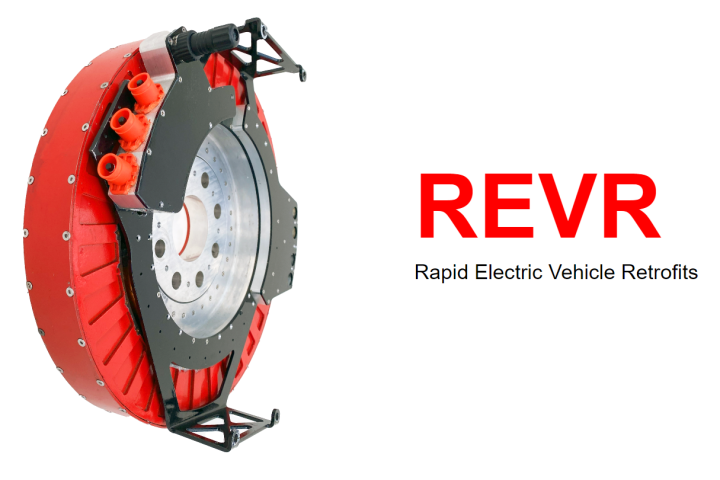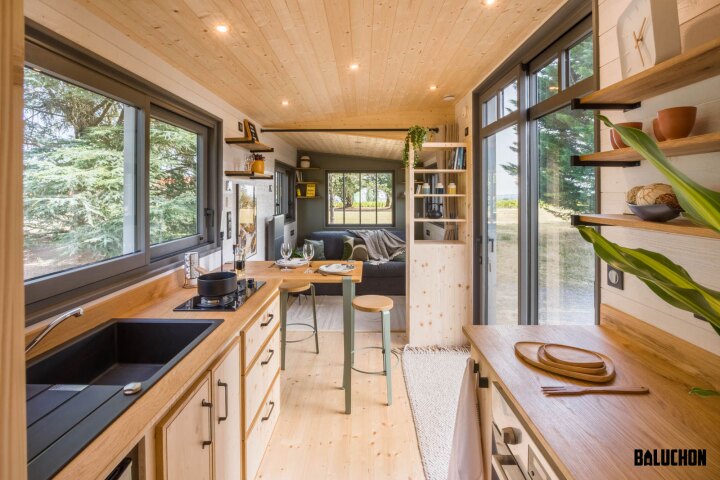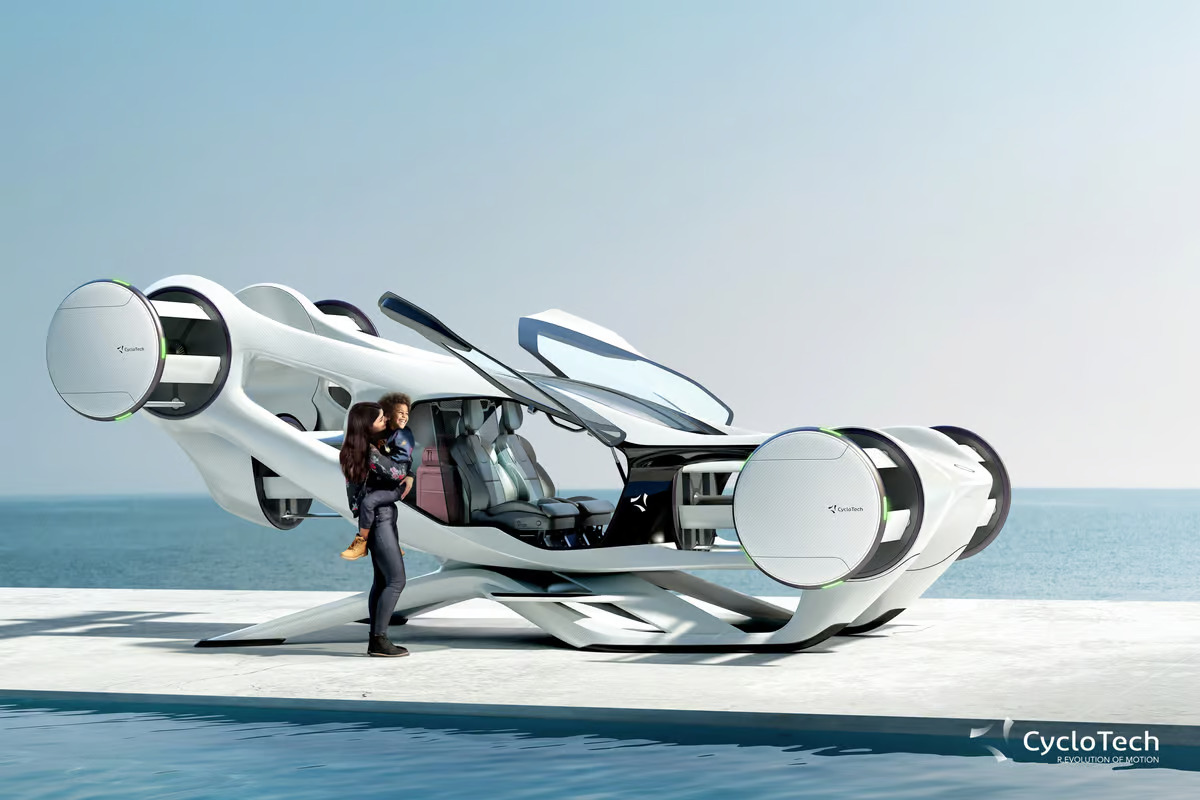 Propulsion barrels at each corner, and two more running lengthways fore and aft of the cabin. CycloTech View gallery – 3 images
Propulsion barrels at each corner, and two more running lengthways fore and aft of the cabin. CycloTech View gallery – 3 images
–
“the renders look lovely and weird and future-cool”
–
We’ve written plenty about these guys over the years. Operating out of Linz, Austria, CycloTech exists to propagate and commercialize a single idea: the CycloRotor propulsion system.
In the marine world, they’re known as Voith-Schneider propellers, and these spinning barrels of thrust have “walls” made of wing blades, designed to tilt as the barrel spins thanks to conrods connected to a swashplate. This arrangement works a lot like the way helicopter rotors work – causing the blades to continuously vary their pitch as the barrel rotates, so that thrust peaks at a certain point in the rotation and quickly dies back down.
This arrangement means that you can run the barrels around at a more or less constant motor speed, and then direct thrust nearly instantly in 360 degrees – mainly downward, in this application, but it’s just as easy for these barrels to fire thrust rearward, to accelerate you forward; forward, to effectively hit the air brakes; or even upward, if gravity’s not going to accelerate you quickly enough toward the ground.
That super-quick thrust-vectoring is the key advantage of the Voith-Schneider propeller in the marine world; it offers tug boats, ferries, firefighting ships and the like the ability to position themselves precisely in the water, to hold in one spot regardless of what’s going on around them, and to quickly balance out towing forces that might otherwise tip them over.
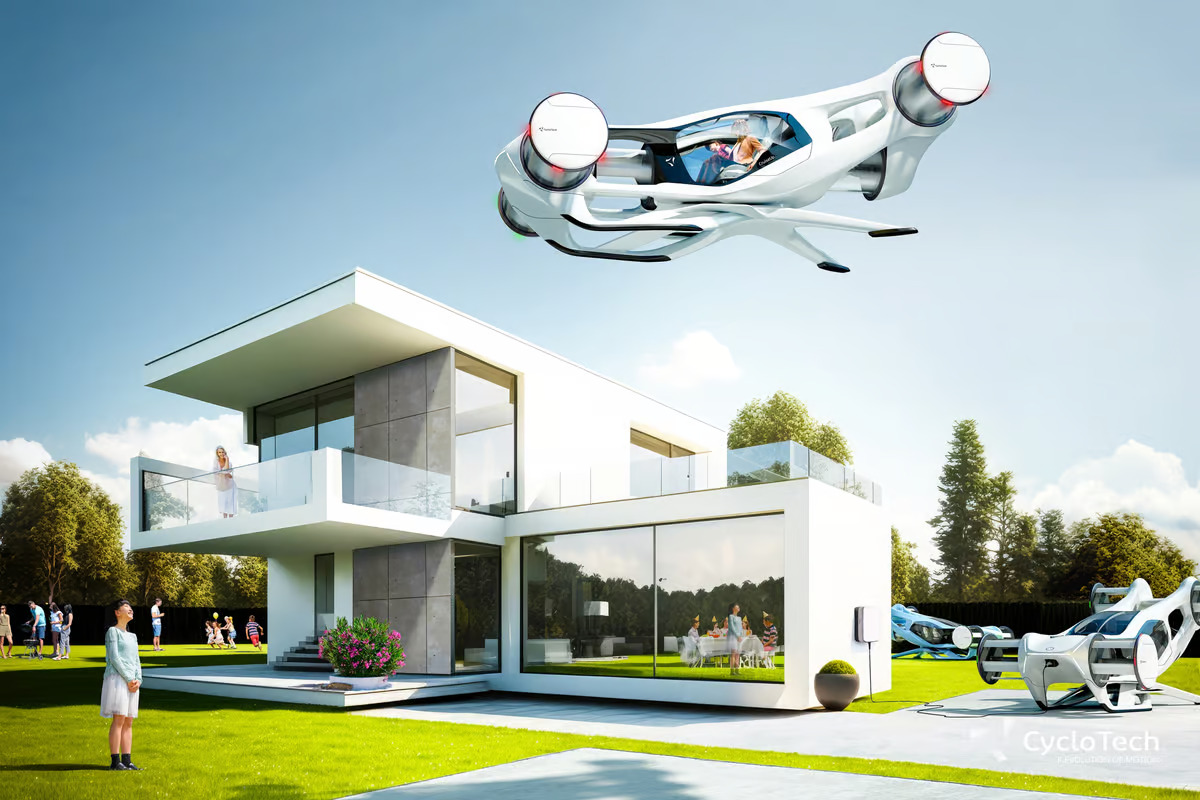
The disadvantages are not trivial; the constant mechanical movement of the swashplate and tilting blades make them maintenance items in a way that regular ol’ propellers really aren’t – and the associated hardware and bearings add weight. There’s also the fact that the blades are always producing drag, but only sometimes producing thrust – and that affects efficiency.
It’s not immediately apparent to us that these CycloRotors will beat regular electric propellers in the eVTOL world, where weight and efficiency are paramount due to the piddly energy storage capability of lithium batteries. But in a future where energy storage isn’t a limiting factor, their agility could come in handy; an aircraft flying on these things might be able to hover more smoothly and stably than the competition simply because it can take quicker corrective action against wind gusts.
Look, here’s CycloTech’s 80-kg (176-lb) prototype’s first untethered outdoor flight, from a month ago, you can see for yourself how it hovers.
–
Either way, CycloTech has now designed its first concept aircraft. It’s targeted at personal ownership rather than air taxi duties; a buy ‘n’ fly commuter that’ll take off and land in your driveway or back yard in some distant theoretical future where it’s remotely legal to operate aircraft like that.
The CruiseUp air concept is about one and a half times the size of a regular ground car, but only seats two – although there seems to be a small luggage compartment you could cram a small child or two into if nobody’s looking.
It runs six CycloRotors, although only the four at the corners are immediately visually apparent. The other two are mounted fore and aft of the cabin, and they spin on a longitudinal axis. So they can help with downward thrust, as well as lateral thrust for sideways motion or rotation, but they won’t contribute to forward or rearward thrust.
While it looks like some sort of flying high heel, the CruiseUp will act a lot like a traditional multicopter in flight – there are no wings contributing lift for efficient cruise flight, so it’ll have to be supported by thrust at all times. As such, it’s gonna suck some battery – a fact CycloTech acknowledges in its fairly sad 150-km/h (93-mph) top speed and 100-km (62-mile) estimated range.
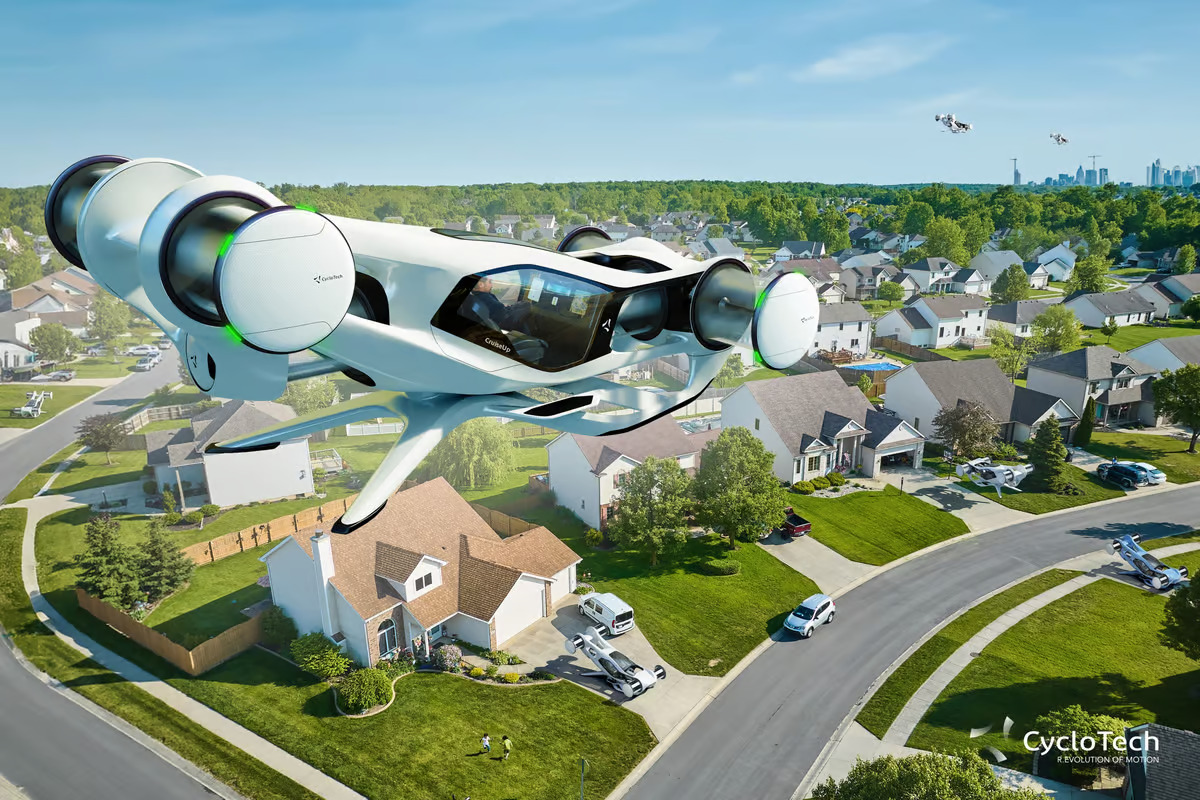
But the company doesn’t anticipate this thing’s going to hit the skies until at least 2035 or later; it’s waiting for eVTOL air taxis and shuttles to come in, lay the groundwork for a new wave of clean, high-volume electric air transport, and get things all settled with the regulators, before things might start to open up for widespread adoption of personal air cars. By then, presumably either energy storage is a solved problem, or we’re all running around with sharp sticks trying to steal bugs and thistles from our neighbors’ gardens to survive.
So for a futuristic concept vehicle like this, CycloTech’s timeline is refreshingly reasonable, and the company deserves kudos for that, as well as for getting a decent-sized subscale prototype up and flying. But while I’m not the most business-savvy ape descendant that ever walked the Earth, it does strike me that companies probably ought to make the odd buck here and there, and it’s not clear how CycloTech plans to do that for the next decade.
Perhaps the most immediate utility for this kind of thing will be in smaller drones, where precise positioning and multi-directional agility could be handy for asset-inspection-style UAV flights.
Either way, the mechanics of it are very fun, the renders look lovely and weird and future-cool, and we do enjoy seeing different approaches like this getting out in the world and finding their places to shine, so we look forward to learning more as things progress.
Source: CycloTech View gallery – 3 images
–










